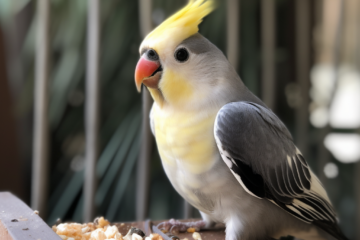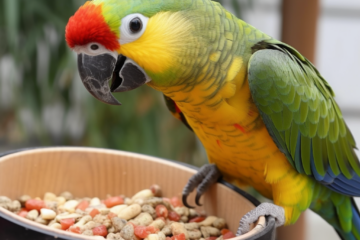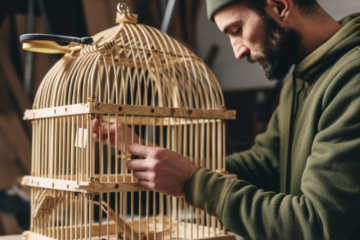Ever wondered how molting birds manage to shed old feathers and grow new ones so effortlessly? The process of molting is a fascinating phenomenon in the avian world that plays a crucial role in maintaining feather health and ensuring optimal flight performance. From songbirds to raptors, understanding the intricacies of molting can provide valuable insights into bird behavior and ecology. Join us as we delve into the captivating world of molting birds, exploring the reasons behind this natural occurrence and uncovering the secrets behind their remarkable feather regeneration.
Understanding Bird Molting Basics
Importance of Feathers
Feathers are vital for molting birds as they aid in flight, provide insulation, and offer protection. When old feathers wear out or get damaged, molting allows new ones to grow in their place. This process ensures that a bird’s feathers remain healthy and functional.
Birds rely on their feathers not just for flying but also to regulate body temperature and protect themselves from the elements. During molting, birds shed their old feathers gradually so that they can continue to perform these essential functions without interruption. For example, waterfowl molt after breeding season as part of their annual cycle.
Molting Patterns
Understanding the different patterns of molting is crucial when studying molting birds. Birds can undergo two main types of molts: a partial molt where only some feathers are replaced, or a complete molt where all feathers are shed simultaneously. Each species has its unique molting pattern based on factors like age, sex, and environmental conditions.
Some birds exhibit complex molts involving multiple stages over an extended period. For instance, raptors may go through sequential molts with distinct phases such as prebasic molt and prealternate molt throughout the year. These intricate patterns allow birds to adapt to changing needs like camouflage during hunting seasons or breeding displays.
Frequency and Seasonal Patterns of Molting
Timing and Duration
Birds typically undergo molting once or twice a year, with the process commonly occurring after the breeding season. The timing and duration of molting can vary significantly among different bird species. For example, some birds may start their molts in late summer or early fall after the breeding season ends, while others might molt in spring before migration.
Some birds experience a prolonged period of molting that can last several weeks to months. During this time, they replace old feathers with new ones gradually. On the other hand, certain species have a more rapid molting process that takes place over just a few days.
Complete vs. Partial Molts
There are two main types: complete and partial molts. In a complete molt, birds shed all their feathers at once and grow an entirely new set. This type of molt is common among many species as it allows for optimal feather replacement.
On the contrary, in a partial molt, only some feathers are replaced while others remain intact. This type of molting occurs in various bird species throughout the year but is typically less noticeable than complete molts since not all feathers are shed simultaneously.
Reasons and Triggers for Feather Molting
Hormonal Influence
Birds molt due to hormonal changes in their bodies. Hormones like prolactin and testosterone play a crucial role in initiating the molting process. These hormones signal the bird’s body that it is time to shed old feathers and grow new ones.
Feathers get damaged or worn out over time, affecting a bird’s ability to fly effectively. To maintain optimal flight performance, birds undergo molting to replace these damaged feathers with fresh ones. This ensures that the bird can continue flying efficiently without being hindered by tattered or frayed feathers.
Environmental Factors
The length of daylight hours and temperature also influence when birds molt. As days become shorter during fall, many species of birds start preparing for winter by shedding their old feathers and growing new ones suitable for colder weather conditions. The availability of food resources can also impact when a bird decides to molt.
-
Birds molt due to hormonal changes.
-
Damaged feathers affect flight performance.
-
Daylight length and temperature trigger molting.
Duration and Environmental Impact on Molting
Molting Periods
Feather molting in birds can last anywhere from a few weeks to several months, depending on the species. During this time, birds shed old feathers and grow new ones to maintain their plumage’s health and functionality. For example, waterfowl like ducks often molt all their flight feathers at once during the summer, rendering them flightless for a period until new feathers grow in.
Adequate nutrition is crucial for birds during molting as they require additional energy and nutrients to support feather growth. Birds need a diet rich in proteins, fats, vitamins, and minerals to ensure healthy feather development. Without proper nutrition, birds may experience delayed molting or produce poor-quality feathers that impact their ability to fly efficiently or stay warm.
Environmental Factors
Various environmental factors play a role in influencing the molting process of birds. Nutrition plays a critical role; insufficient food availability can delay molting or result in incomplete feather regrowth. Stress levels also affect molt duration; high-stress situations such as disturbances by predators or habitat destruction can prolong the molting period.
Habitat conditions are another significant factor impacting bird molts; changes in temperature or humidity levels can influence when certain species molt. For instance, some bird species living in seasonal environments may synchronize their molt with specific times of the year based on environmental cues like day length or food availability.
Recognizing Symptoms of Molting in Pet Birds
Preening Behavior
Increased preening behavior is a key sign that your pet bird might be going through molting. During this period, birds spend more time grooming themselves to help remove old feathers and make way for new ones. It’s essential to provide them with adequate bathing opportunities and a balanced diet rich in nutrients to support feather growth.
Birds often exhibit an increase in preening activity as they focus on maintaining their plumage during molting. This behavior helps them keep their feathers clean, healthy, and well-groomed. Observing your pet bird engaging in frequent preening sessions can indicate that it is undergoing the molting process.
Feather Changes
Feather loss, the emergence of pin feathers, and alterations in plumage coloration are clear indicators that your pet bird is molting. Feather loss can sometimes be mistaken for illness or stress; however, during molt, it’s a natural process as old feathers shed to make room for new ones. Pin feathers are developing shafts where new feathers will grow from, appearing as small spikes on the skin.
The change in plumage coloration may also occur during molting due to the growth of new feathers with different pigmentation levels than the previous ones. These variations can lead to temporary changes in appearance until the molt cycle completes itself naturally.
Care Tips During the Molting Process
Balanced Diet
Feeding your molting birds a balanced diet is crucial for healthy feather growth. Make sure their meals are rich in protein, vitamins, and minerals to support the development of new feathers. Foods like dark leafy greens, carrots, seeds, and nuts can provide the necessary nutrients.
A balanced diet:
-
Supports feather growth
-
Includes protein, vitamins, minerals
During molting season, consider adding foods high in protein like cooked eggs or legumes to aid in feather regeneration.
Regular Bathing
Offering your molting birds regular bathing opportunities can help them remove old feathers more easily. This practice not only assists in getting rid of loose feathers but also promotes healthy feather development by keeping their skin moisturized.
Regular bathing:
-
Helps remove old feathers
-
Promotes healthy feather development
Consider providing a shallow dish with lukewarm water for your bird to bathe in comfortably. Some birds may prefer mist baths using a spray bottle filled with clean water.
Minimize Stressors
Minimizing stressors during the molting process is essential for your bird’s well-being. Loud noises or sudden changes in their environment can disrupt their natural molting cycle and impede proper feather growth.
Reducing stressors:
-
Ensures smooth molting process
-
Promotes proper feather growth
Create a calm and quiet environment for your pet bird during this sensitive time. Avoid rearranging their cage frequently or introducing new companions that could cause stress.
Behavioral Changes and Comfort Measures
Discomfort and Irritability
Molting birds may experience changes in behavior, becoming more irritable or less active. The molting process can be uncomfortable for them as they shed old feathers to make way for new ones. During this time, birds might exhibit signs of stress or discomfort due to the physical strain of growing new plumage.
Providing a quiet and calm environment is crucial to help alleviate stress during molting. By minimizing noise and disturbances around the bird’s living space, you create a soothing atmosphere that promotes relaxation. This approach can significantly reduce the bird’s irritability levels and ensure a smoother molting process.
Extra Comfort Measures
Offering additional perches is an excellent way to enhance comfort for molting birds. Having multiple perching spots allows them to choose where they feel most at ease while going through this natural phase. Moreover, providing soft bedding materials such as shredded paper or fabric scraps can offer extra cushioning and warmth during molting.
Creating a cozy nesting area with soft materials gives molting birds a comfortable spot to rest without exerting pressure on their developing feathers. These small adjustments in their living conditions can make a significant difference in how well birds cope with the changes happening in their bodies during molt.
Supporting Your Pet Bird’s Well-being Throughout Molting
Monitoring Progress and Seeking Veterinary Care
During molting birds, it is crucial to monitor your pet bird’s progress closely. Look out for any abnormal signs such as excessive feather loss or changes in behavior. If you notice anything concerning, do not hesitate to consult a veterinarian. They can provide guidance on how to best support your bird through the molting process.
Birds, especially larger birds like the herring gull, may experience more intense molts that could impact their overall well-being. By staying vigilant and seeking professional advice when needed, you can ensure that your pet bird remains healthy and comfortable during this natural phase.
-
Regularly monitor your bird’s progress
-
Consult a veterinarian if you notice any abnormal signs
-
Seek professional advice for supporting your pet bird through molting
Providing Essential Care and Understanding
To support your pet bird during molting, make sure they have access to fresh water at all times. Hydration is essential for maintaining healthy feathers and overall well-being. Create a clean living environment free from drafts or stressors that could exacerbate the molt.
Molting can be physically and emotionally demanding for pet birds as they shed old feathers and grow new ones. Be patient with your feathered friend during this time of change. Offer them comfort, reassurance, and a stable routine to help alleviate any stress associated with molting.
-
Ensure access to fresh water
-
Maintain a clean living space
-
Be patient and understanding towards your pet bird
You’ve learned the ins and outs of bird molting, from its basics to recognizing symptoms in your pet bird. Understanding the frequency, triggers, and care tips during this natural process is crucial for supporting your feathered friend’s well-being. Remember, being attentive to their needs and providing comfort measures can make all the difference in helping them through this phase.
Take the time to observe your pet bird closely, offer extra care and attention when needed, and create a soothing environment to ease their molting journey. By implementing these insights and tips, you can ensure that your pet bird feels supported and comfortable throughout the molting process. Your efforts will strengthen your bond with your feathered companion and contribute to their overall health and happiness.
Frequently Asked Questions
What is molting in birds?
Molting in birds is the process of shedding old feathers and growing new ones. It’s a vital part of their annual cycle to maintain feather health and functionality.
When do most birds molt?
Most birds molt after the breeding season, typically in late summer or early fall. This timing allows them to replace worn-out feathers before winter when insulation is crucial.
How can I help my pet bird during molting?
Provide your pet bird with a nutritious diet rich in proteins and vitamins to support feather growth. Offer gentle handling, minimize stress, and ensure access to bathing water for comfort during this sensitive time.
Are there any signs that indicate my bird is molting?
Yes, common signs of molting include increased preening activity, changes in behavior like irritability or decreased appetite, visible patches of missing feathers, and sometimes temporary bald spots on the body.
How long does the molting process usually last?
The duration of molting varies among species but generally lasts several weeks to a few months. Factors such as age, health status, environmental conditions can influence how quickly a bird completes its molt cycle.


